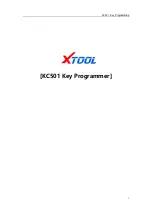
Section 2: Operating Instructions
6/19/23
PR1048 & PR1060 Powered Rakes 314-299M
20
General Operating Instructions
First, completely familiarize yourself with The Operator’s
Manual. Then complete the Operator’s checklist,
properly attach the Powered Rake to your tractor, make
initial depth, level, and roller angle adjustments. After
completing the above, you will need to choose a work
site, perform operational safety checks, and make final
adjustments before using your Land Pride Powered
Rake.
It’s now time for a running operational safety check. Make
certain that the tractor’s park brake is engaged, power
take-off is disengaged, and the Powered Rake is resting
on the ground. Start the tractor and back off engine rpm
to approximately one-quarter throttle. Lift the Powered
Rake off the ground slightly and engage the tractor’s
power take-off. If everything is running smoothly,
increase throttle speed until you have reached full
operating speed. Never engage the tractor power take-off
at full engine rpm, damage to the driveline and/or
Powered Rake can occur.
To make final adjustments, choose a work site that is dry
and allows you to make at least a 50 ft. (15 m) straight
run. Disengage tractor power take-off, raise Powered
Rake half way off the ground, release the park brake, and
travel to your starting point.
Once at the site, idle the tractor engine, engage the
power take-off, and then increase engine speed until the
tractor is at full 540 rpm operating speed. Begin traveling
forward while gently lowering the running Powered Rake
to the ground. Make slight changes to the tractor’s ground
speed as you travel forward to determine the desired
ground finish. Generally, a slower speed results in a finer
finish, while a higher speed results in a coarser finish.
Excessive ground speed may result in dirt or material
passing over the top of the material control deflector or
too much material being windrowed off to the side.
Powered Rakes do not perform well in wet sticky soil.
Avoid making sharp turns or backing-up when in contact
with the ground.
IMPORTANT:
Shut down tractor according to
on page 11 any
time the Powered Rake is not operating properly or
needs adjustment.
Normal operating rake angle is 15 degrees left or right.
However, you may want to make subtle hydraulic
adjustments to the roller angle to determine varying
effect on the surface finish.
You can also vary the effect on the surface finish by
adjusting the material control deflector height above the
roller. The material control deflector sifts out clods, rocks,
and other debris as the soil passes over the top of the
roller. Adjusting the blade down decreases the gap
between the deflector and roller and will sift out more
objects for a finer soil finish. Adjusting the blade up
allows more clods, rocks, and debris to pass over the
roller and produces a coarser soil finish.
Set working depth and level the rake with the caster
gauge wheels and not with the tractor. Normally a
one-inch cultivation depth is considered ideal for a
surface finish. Make adjustments to the working depth if
too many rocks or excessive debris pass under the roller
by changing the C-spacers on the gauge wheel spindles.
Increase working depth by moving the spacers from
below the support arms to above the support arms.
Decrease working depth by moving the spacers from
above the gauge wheel support arms to below the
support arms.
The Powered Rake should also be set to operate level. It
has a tendency to go in deeper on the chaincase side
(left side) because that is the heavy side of the rake.
Compensate for this by changing the C-spacers on the
right gauge wheel so that it is set approximately
1" (2.5 cm) deeper than the left gauge wheel.
After you have traveled 50 ft. (15 m), shut down the tractor
and Powered Rake to inspect the finish and determine
what, if any, additional adjustments need to be made.
Check for any foreign objects wrapped around the roller
or lodged between moving parts.
Remember that the right finish is achieved through a
combination of proper soil moisture conditions, operating
depth, ground speed, material control deflector opening,
and roller angle. Your Powered Raking capabilities will
improve rapidly with experience.
















































